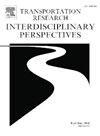NASA的小睡是解决自动驾驶中睡眠惯性的方法吗?揭示深度睡眠对驾驶行为、警觉性和主观体验的影响
IF 3.8
Q2 TRANSPORTATION
Transportation Research Interdisciplinary Perspectives
Pub Date : 2025-05-01
DOI:10.1016/j.trip.2025.101472
引用次数: 0
摘要
在自动驾驶过程中睡觉很可能成为未来的一种普遍做法。当驾驶员由于系统边界而必须恢复控制时,睡眠惯性——睡眠后的昏沉和性能受损——会影响他们的接管和驾驶行为。驾驶之外的研究表明,深度睡眠(AASM阶段N3)会加剧睡眠惯性。操作策略,如NASA的午睡(将午睡时间限制在40分钟以内),旨在避免深度睡眠,尽管在驾驶情况下的影响尚不清楚。这项研究调查了深度睡眠如何影响驾驶行为、警惕性和驾驶员的主观状态。在一项驾驶模拟器研究中,20名参与者在一天中的不同时间完成了两次测试。参与者在自动驾驶过程中睡觉,在睡觉前和睡觉后都手动驾驶。回归分析评估了驾驶行为、警惕性和主观状态对不同深度睡眠量的反应的变化。深度睡眠越多,接管时间和对听觉线索的反应时间就会增加,驾驶速度就会降低。车道保持率和刺激检出率未受显著影响。参与者报告说,在深度睡眠增加后,他们的动力减少,感知延迟,不适,难以保持清醒。研究结果表明,深度睡眠对速度相关表现的影响比对准确性的影响更大,这表明司机在睡眠惯性下补偿了认知能力的下降。研究结果支持使用主动策略来避免深度睡眠。然而,由于深度睡眠发生得很快,限制午睡时间可能不足以防止睡眠惯性。本文章由计算机程序翻译,如有差异,请以英文原文为准。
Is the NASA nap the solution for sleep inertia in automated driving? Unveiling effects of deep sleep on driving behavior, vigilance and subjective experience
Sleeping during automated driving is likely to become a common future practice. When drivers must resume control due to system boundaries, sleep inertia—post-sleep grogginess and impaired performance—affects their takeover and driving behavior. Research outside of driving indicates that deep sleep (AASM stage N3) can intensify sleep inertia. Operational strategies, like the NASA nap (capping nap duration to 40 min), aim to avoid deep sleep, though effects in driving contexts remain unclear. This study investigated how deep sleep impacts driving behavior, vigilance, and drivers’ subjective states.
In a driving simulator study, 20 participants completed two test sessions at different times of the day. Participants slept during an automated drive and drove manually both before and after sleep. Regression analyses assessed changes in driving behavior, vigilance, and subjective states in response to varying amounts of deep sleep.
With more deep sleep, takeover times and reaction times to auditory cues increased, and driving speed decreased. Lane keeping and stimuli detection rates were not significantly affected. Participants reported less motivation, delays in perception, discomfort, and struggles to stay awake after increased deep sleep.
Findings show that speed-related performance aspects were more affected by deep sleep than accuracy, suggesting drivers compensated for reduced cognitive abilities under sleep inertia. The results support the use of proactive strategies to avoid deep sleep. However, since deep sleep onset occurred rapidly, restricting nap duration might be insufficient to prevent sleep inertia.
求助全文
通过发布文献求助,成功后即可免费获取论文全文。
去求助
来源期刊

Transportation Research Interdisciplinary Perspectives
Engineering-Automotive Engineering
CiteScore
12.90
自引率
0.00%
发文量
185
审稿时长
22 weeks
 求助内容:
求助内容: 应助结果提醒方式:
应助结果提醒方式:


